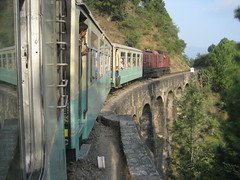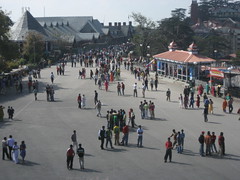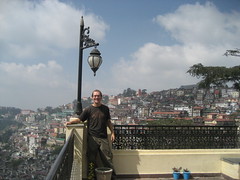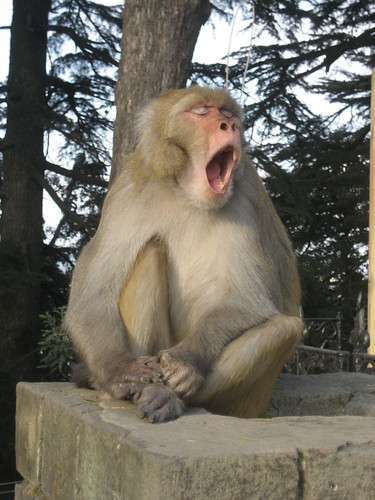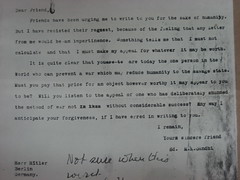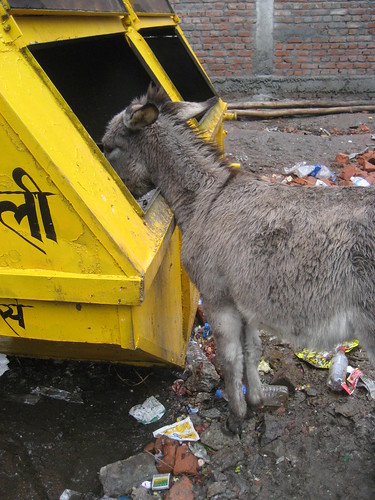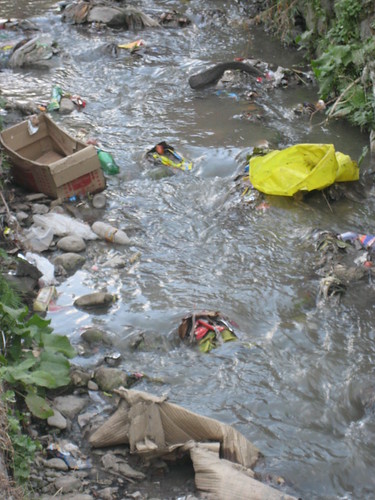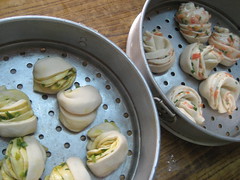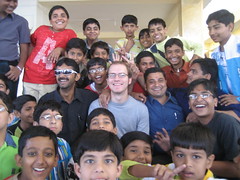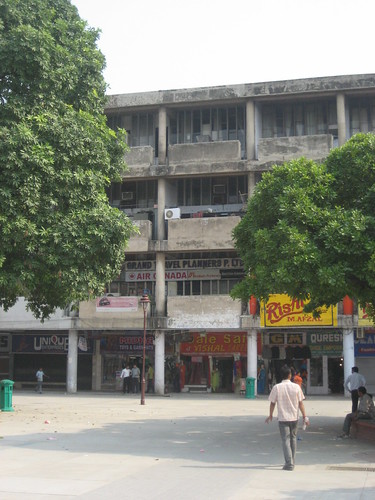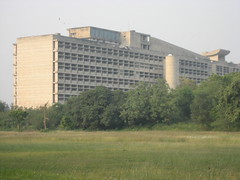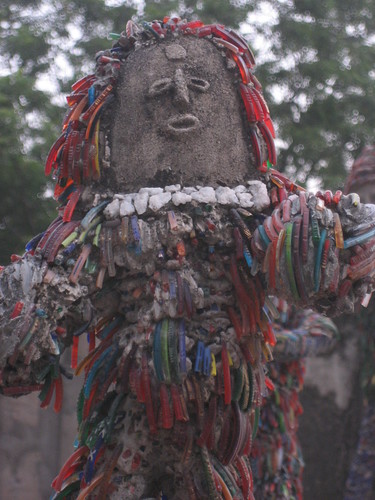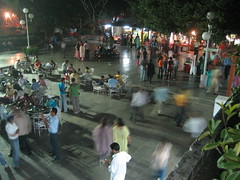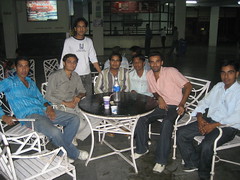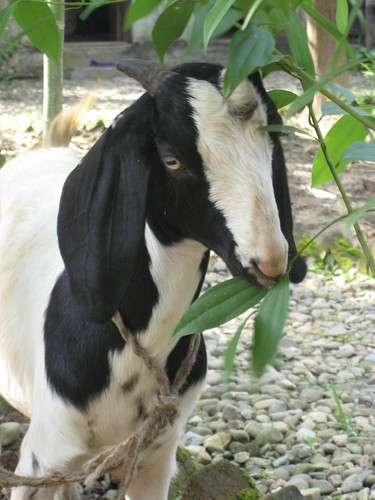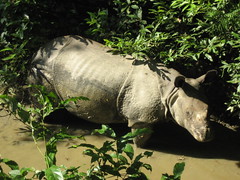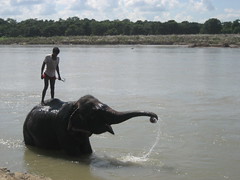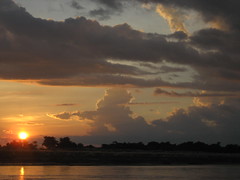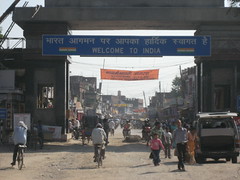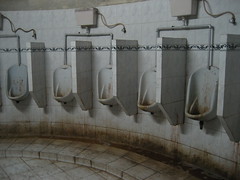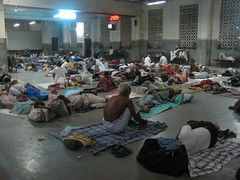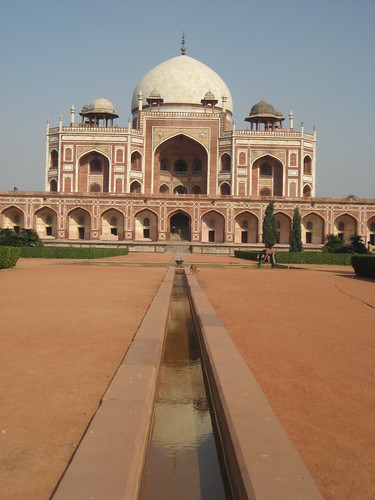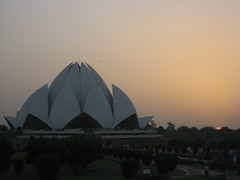The highs and lows of traveling in India
On my last day in Dharamsala, I made the short walk out to the small but very well curated Tibetan Museum, which told the story of Chinese occupation through the eyes of a handful of Tibetan refugees living in the city. It was particularly interesting to see photos of the young Dalai Lama accompanied by his entourage as they walked hundreds of miles across barren fields and snowy mountain passes as they escaped into India. So far, a staggering 1.3 million Tibetans have died as a result of the occupation — from murder, rape, torture, famine, and more. Without going on and on about the situation in Tibet, having visited both Tibet itself as well as refugee areas elsewhere certainly raised my own awareness of the Tibetan struggle — an issue I was only vaguely aware of before I came on this trip.
With only a few hours of sleep, I left the city for a crazy-early ride (3:45 am) on the most crappy bus in history headed for the holy Sikh city of Amritsar, about six hours drive to the west. The main attraction of the city for travelers and pilgrims alike is the Golden Temple, where foreigners can stay free-of-charge in dorm rooms. I managed to score a somewhat private room along with Simon and Carol, a cool couple from the UK that I met in Dharamsala. Just outside our door, masses of Hindu and Sikh pilgrims visiting the temple were camped out across the floor of the courtyard.
The scene during the day:
Even more bustle and bodies at 2:30 am:
Each day, the three of us were drawn like magnets to the Golden Temple. There is something truly magical about the place that is hard to describe. Thousands of people quietly move around the marble walkway surrounding the lake in which the golden temple sits. A line forms outside of pilgrims getting ready to enter the temple itself, where there are a few men chanting, praying, and playing instruments around the clock. After exiting the temple, Sikhs drink a few gulps of holy water from the lake. At night, everyone sits around the walkway to pray, meditate, or enjoy the serene atmosphere that the temple exudes. Simon, Carol and I must have spent ten hours just walking around the temple over the course of the three days that we were in Amritsar.
In addition to the Sikhs providing free accommodation, they also provide free food for up to 30,000 visitors per day, so I decided to go check it out. The experience of eating in the cafeteria totally blew me away — the whole process is like modern assembly lines, but it's all made with people. You walk toward the cafeteria and someone shoves a spoon into your hand. Then another hands you a cup. Then a plate. Then you follow the flow of traffic upstairs into a big warehouse-like room. You sit on the floor on a long bamboo mat next to the person in front of you. Just as you set down your utensils, the slop arrives. From a few feet up, a green pile of slop lands in your plate. Then white slop. Then orange slop. Then water in the cup. Then you hold out your hands and chapati (flatbread) gets dropped into your hands. Then you start eating. At coordinated times, people come by offering more of each color of slop. Although it looks pretty nasty, the food was actually really good — the green slop was like split-pea soup, the white was like rice pudding, and the orange was a sweet grain mixture. I loved the experience, so I went back a couple more times during my stay. Here are a few shots of the action:
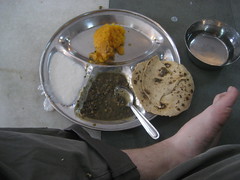
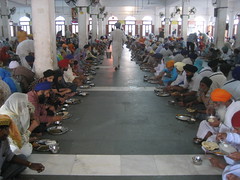
During my stay in Amritsar, the single thing that impressed me the most was the people. Sikhs are probably the most considerate, generous and friendly people I've met on my trip so far, and you never feel harassed or scammed, which was a nice break from the rest of India. People love to get their pictures taken, especially the Sikh men — identifiable by the folded turban covering their uncut hair, long beards, steel bracelet and blade. I really enjoyed taking photos of people in the temple and out in the streets. Here are some of my favorites:
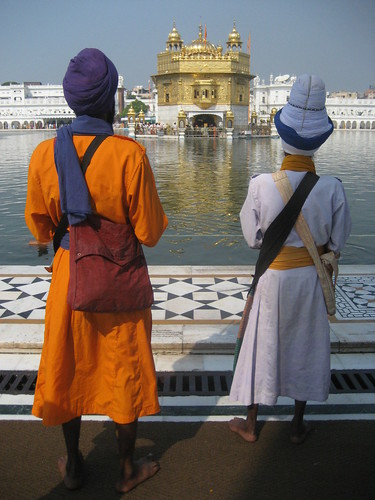
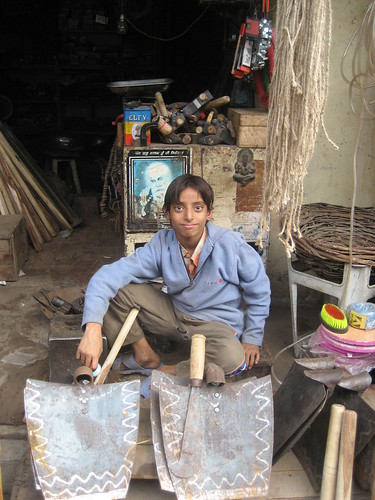
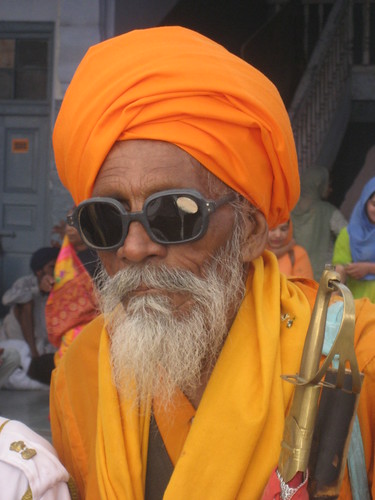
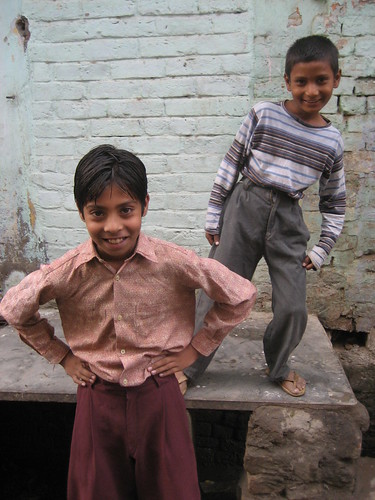
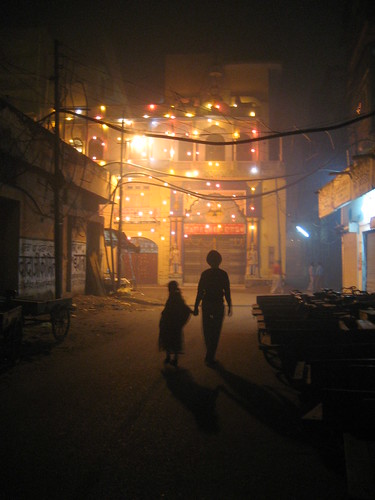
A few miles outside of Amritsar lies the India-Pakistan border, and each night there is a big and ridiculous border-closing ceremony with a lot of foot-stompin', silly uniform-wearin' nationalism on display. I piled in a minivan with a whopping 13 other people to go check it out, along with hundreds of Indian people who go to sit in the bandstands and cheer on their country's border guards. The somewhat goofy 15-minute ceremony, carefully coordinated between the two countries, almost made me forget that I was just a few feet away from Pakistan, somewhere I never pictured I'd be. Side note: The guy who drove me to the airport all the way back in Toronto was from Pakistan and invited me to stay with his family in Lahore during my trip. I gave it serious thought over the last few months, but in the end I decided that Pakistan just isn't a smart place to be right now, even though I've met several people who just went and they said it was amazing. I'll have to save that country for a future trip. See Mom, I'm making smart decisions!
I spent my final night in Amritsar celebrating Diwali, the biggest national festival — basically the equivalent to our 4th of July. Walking through the streets, kids light off sketchy fireworks, and while I was running away from one of them burning on the ground I made the biggest mistake you can make in India: stepping in the water. Along about half of the streets in India there is a foot-wide gap between the sidewalk and the buildings, where there is this disgusting, smelly water. It looks like a cross between sewage and that blue water they put the combs in at Cost Cutters, plus a coating an oily film on top and a swarm of flies buzzing around. Trying to escape one of these fireworks, I sunk my right foot directly into the absolutely nasty water, submerging it up to the calf. Holding back my own vomit and tears, I hauled ass to the Golden Temple, where I remembered seeing an area to wash your feet. It was like the end of The Crying Game or something: me sitting there under the foot-shower trying desperately to get that horrible sludge off of my body. It was probably the most disgusting thing that's ever happened to me — I'm seriously shuddering just thinking about it.
After I felt somewhat clean again, I enjoyed a spectacular fireworks show over the absolutely packed Golden Temple complex, then headed for the safety of my new hotel's rooftop where I enjoyed a 360 degree view of sketchy fireworks lighting up the the sky which lasted until the early morning.
The next afternoon I was off to the train station to take a 17-hour sleeper train to Jaipur, the capital of the state of Rajasthan. On the long train ride I was befriended by an incredibly nice Sikh family who generously fed me dinner and breakfast and insisted that I stay in their home next time I visit Amritsar. I was overwhelmed by the hospitality and it left me with one final great impression of the unbelievable kindness shown by almost every Sikh person I met over the previous few days. I was thrilled to be in India, surrounded by such great people.
And then along came Jaipur...
As I was researching for this trip, I read that India is one of the most difficult places on earth to travel with all of the hassles, ripoffs, sketchy situations, traffic, noise, smog and more. Whoever came home with those impressions of the country definitely spent a long time in the city of Jaipur. Every ten seconds or so, someone would come up to me and hassle me to give them money, to go in their rickshaw, to drink tea with them, to take their picture, to shake their hand, to buy them chapatis, to go to their shop, to buy gems from them, etc. Add brutal heat, thick smog, and deafening traffic into the mix, and only a few hours outside made me feel absolutely exhausted. It's almost as if 50 years ago, in addition to the regular classes at school — math, science, social studies, gym — they added a special Jaipur-exclusive course called How to Annoy the Living Shit out of Foreigners.
Despite the constant annoyances, I managed to see most of the city's big sights: the City Palace complex and armory, the numerous bazaars, the beautiful Palace of the Winds, and nearby Amber Fort. My favorite was definitely the Jantar Mantar, an fascinating outdoor observatory with enormous equipment dating from the early 18th century.
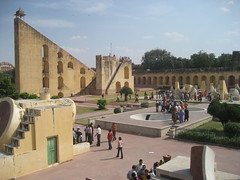
The best part about Jaipur—and I realize this sounds completely ridiculous—is that they have a freaking Subway. And a McDonalds. And a Pizza Hut. When you're sweating like crazy, you've got smog in your eyes, and people constantly surrounding you yelling to get your attention, American fast-food joints are transformed from restaurant into refuge. The headaches and hassles of Jaipur melted away with a little bit of air-conditioning, pop music, and a delicious meatball sub. Luckily, I met some really nice solo travelers at my hotel—Stu, Marc & Jac—who were feeling the same way about the city, so we all vented (at Subway) together. Just to give you an idea of how filthy you can get after a few days spent in Jaipur, here's a shot of Stu's feet:
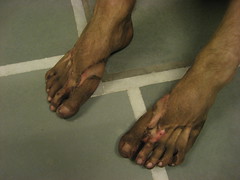
To make matters in Jaipur even more uncomfortable, I started having an absolutely incredible toothache with extremely intense pain on one side of my mouth which lasted for a few days before I decided that I had better see a dentist. After searching for half a day, I finally found a place that seemed decently reputable. In the end, my visit was frustrating: the dentist just tapped on my teeth a little bit, took a few x-rays, and declared that I was fine. A few days later, I'm still in pain, so I'm debating whether or not to head up to Delhi to find a western-trained dentist.
I'm now hanging out in Pushkar, an awesome city to the south which is home to the internationally known Pushkar Camel Fair, which is taking place right now. I love the town so far, my guesthouse is awesome, and I'm back to having an great time. I spent a few hours over at the fairgrounds earlier today, and it was absolutely unreal. I'll talk about the camel fair more in my next update. If the jaw-pain situation calms down, I'll stay here until November 5th (the end of the fair), then continue my trip through Rajasthan. I'll leave you with a shot of my current setting, the beautiful and relaxing city of Pushkar:
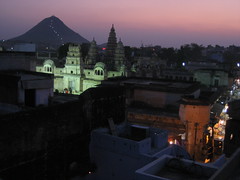
Thanks for reading,
Ryan!
Photos updated: Dharamsala, Amritsar, Jaipur, Pushkar. Also, I was finally able to upload the video of me jumping off a bridge in Nepal. You'll have to tilt your head 90 degrees to the left to see it. Sorry!
